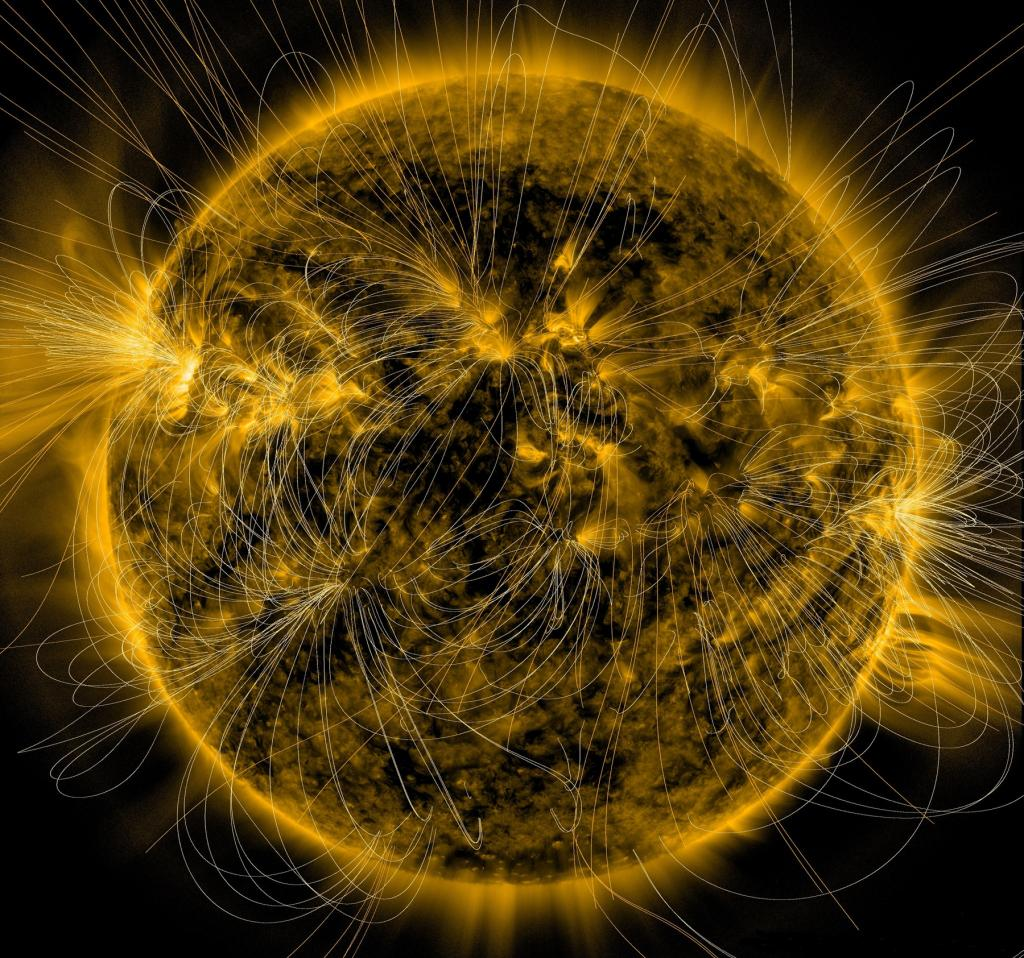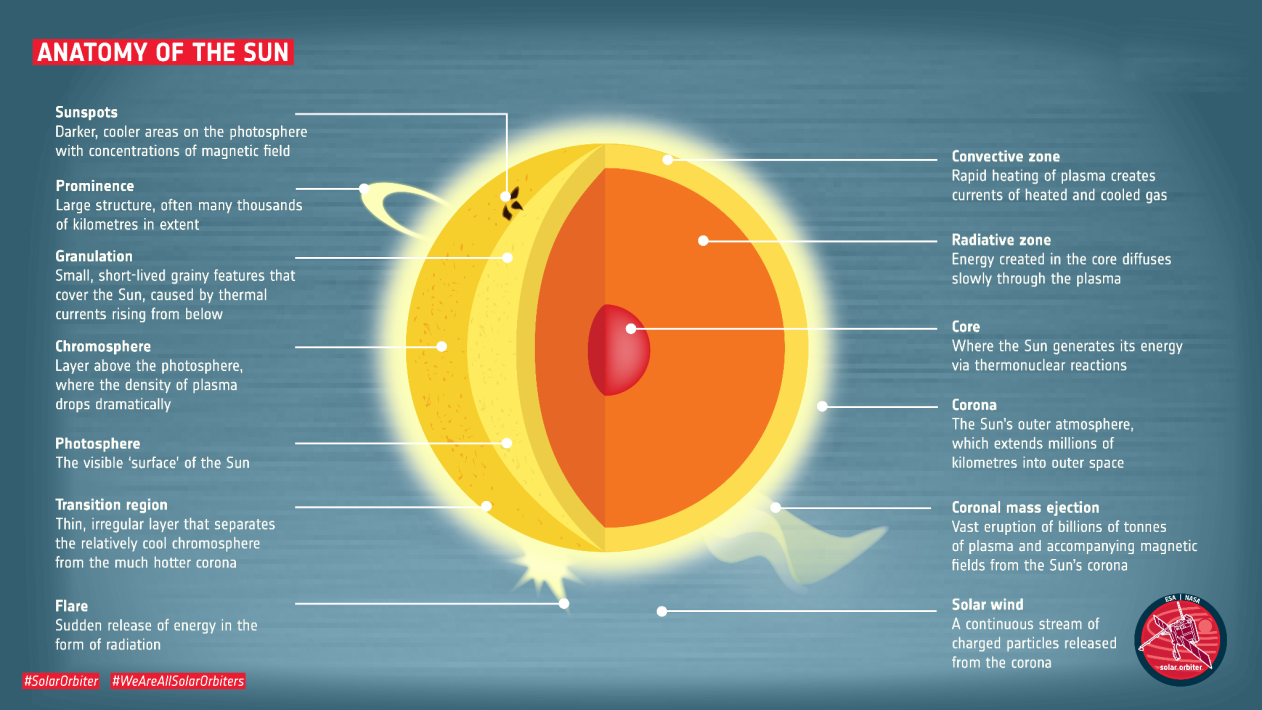Description

Copyright infringement not intended
Picture Courtesy: https://www.downtoearth.org.in/news/science-technology/sun-s-magnetic-field-flips-the-script-new-study-places-origin-closer-to-the-surface-96290
Context: Study by the Massachusetts Institute of Technology and the University of Edinburgh suggests Sun's magnetic field originates closer to the surface, aiding solar cycle prediction.
Detail
- It was widely believed that the Sun's magnetic field, which drives solar storms and other solar activities, originates deep within the Sun, around 130,000 miles below the surface. This understanding was based on the traditional solar dynamo theory, which assumes that the magnetic field is generated in the tachocline, a thin layer between the radiative interior and the convective exterior of the Sun.
Key Findings of the study
- The study suggests that the Sun’s magnetic field is generated much closer to the surface, approximately 20,000 miles deep, rather than the previously believed depth of 130,000 miles.
- Researchers used advanced numerical simulations to model the Sun's magnetic fields, incorporating torsional oscillations—cyclical patterns in the flow of gas and plasma in and around the Sun.
- The simulations showed consistency with the observed solar cycle, indicating that the magnetic field generation process might be occurring nearer to the Sun's surface.

|
Solar Cycle
●The Sun undergoes an 11-year solar cycle characterised by varying numbers of sunspots. This cycle includes a solar minimum (few sunspots) and a solar maximum (many sunspots).
●The solar cycle is crucial for predicting solar storms, which can have significant impacts on Earth, such as disrupting power grids and satellite communications.
|
Sun's Magnetic Field
Origin and Generation
- Convection Zone: The Sun's magnetic field is primarily generated within its outer layer, known as the convection zone. This region is characterised by convective motion, where hot plasma rises and cooler plasma sinks.
- Dynamo Effect: The convective motion of plasma acts as a dynamo, generating and amplifying magnetic fields through complex interactions. Differential rotation, turbulence, and other factors contribute to the dynamo process.
- Magnetic Flux Ropes: The generated magnetic fields become concentrated into twisted structures called magnetic flux ropes. These ropes rise through the Sun's interior and eventually emerge on its surface, leading to observable phenomena like sunspots.
Structure and Behavior
- Dipolar Configuration: The Sun's magnetic field has a predominantly dipolar configuration, with magnetic field lines emerging from one pole and reconnecting at the other pole.
- Poloidal and Toroidal Components: The Sun's magnetic field consists of poloidal (north-south) and toroidal (east-west) components, reflecting the effects of differential rotation and convective motion.
- Active Regions: Regions of intense magnetic activity, known as active regions, can form on the Sun's surface. These regions often coincide with sunspots, where magnetic field lines are concentrated and twisted.
Effects and Phenomena
- Solar Flares: Magnetic reconnection in active regions can lead to the sudden release of energy in the form of solar flares. These eruptions produce intense bursts of radiation across the electromagnetic spectrum.
- Coronal Mass Ejections (CMEs): Large-scale disruptions of the Sun's magnetic field can result in coronal mass ejections, where vast amounts of solar material are expelled into space. CMEs can impact Earth's magnetosphere and lead to geomagnetic storms.
- Space Weather: The Sun's magnetic field and associated phenomena collectively contribute to space weather, which affects satellites, communication systems, and power grids on Earth. Geomagnetic storms, induced by CMEs, can disrupt technological infrastructure and pose hazards to astronauts.
Future Research and Understanding
- Ongoing research aims to improve our understanding of the Sun's magnetic field and its role in solar dynamics and space weather.
- Advanced modelling techniques and observational capabilities will continue to enhance our ability to predict and mitigate the effects of solar activity on Earth and space-based technologies.

Conclusion
- The Sun's magnetic field is a dynamic and complex phenomenon generated by the convective motion of plasma within its outer layers. It drives a range of solar phenomena, from solar flares to coronal mass ejections, and plays a crucial role in space weather dynamics. Understanding the Sun's magnetic field is essential for predicting and mitigating its impacts on Earth and our technological infrastructure
Source:
Down to Earth
|
PRACTICE QUESTION
Q. What are the effects of the Sun's magnetic field?
1. Auroras on planets with magnetospheres
2. Formation of sunspots
3. Acceleration of charged particles in the solar wind
4. Influence on the trajectories of comets
How many of the above statements are correct?
A) Only one
B) Only two
C) Only three
D) All four
Answer: D
|















